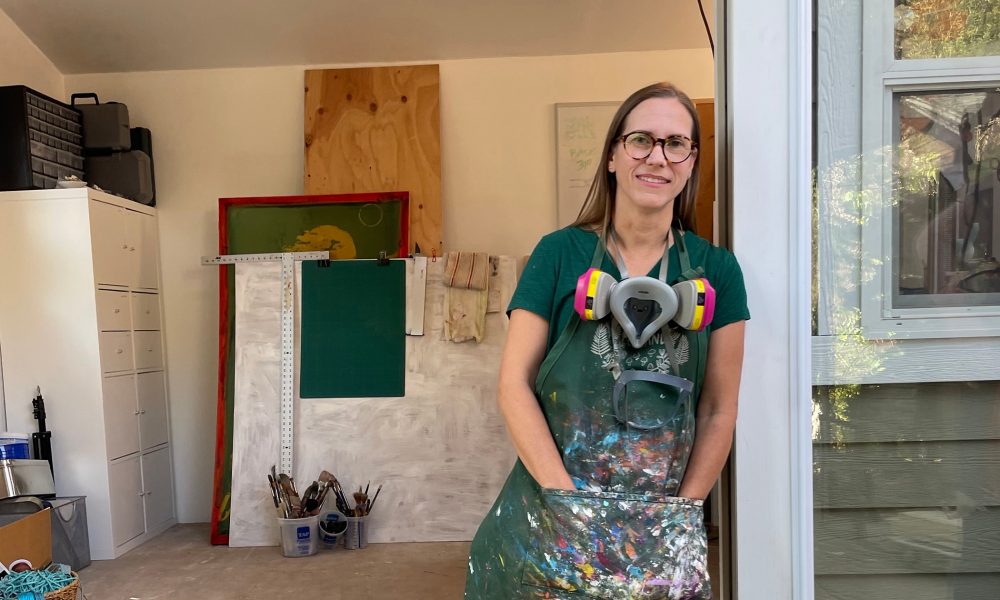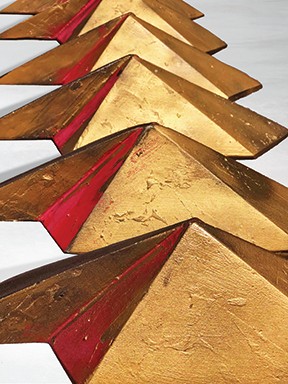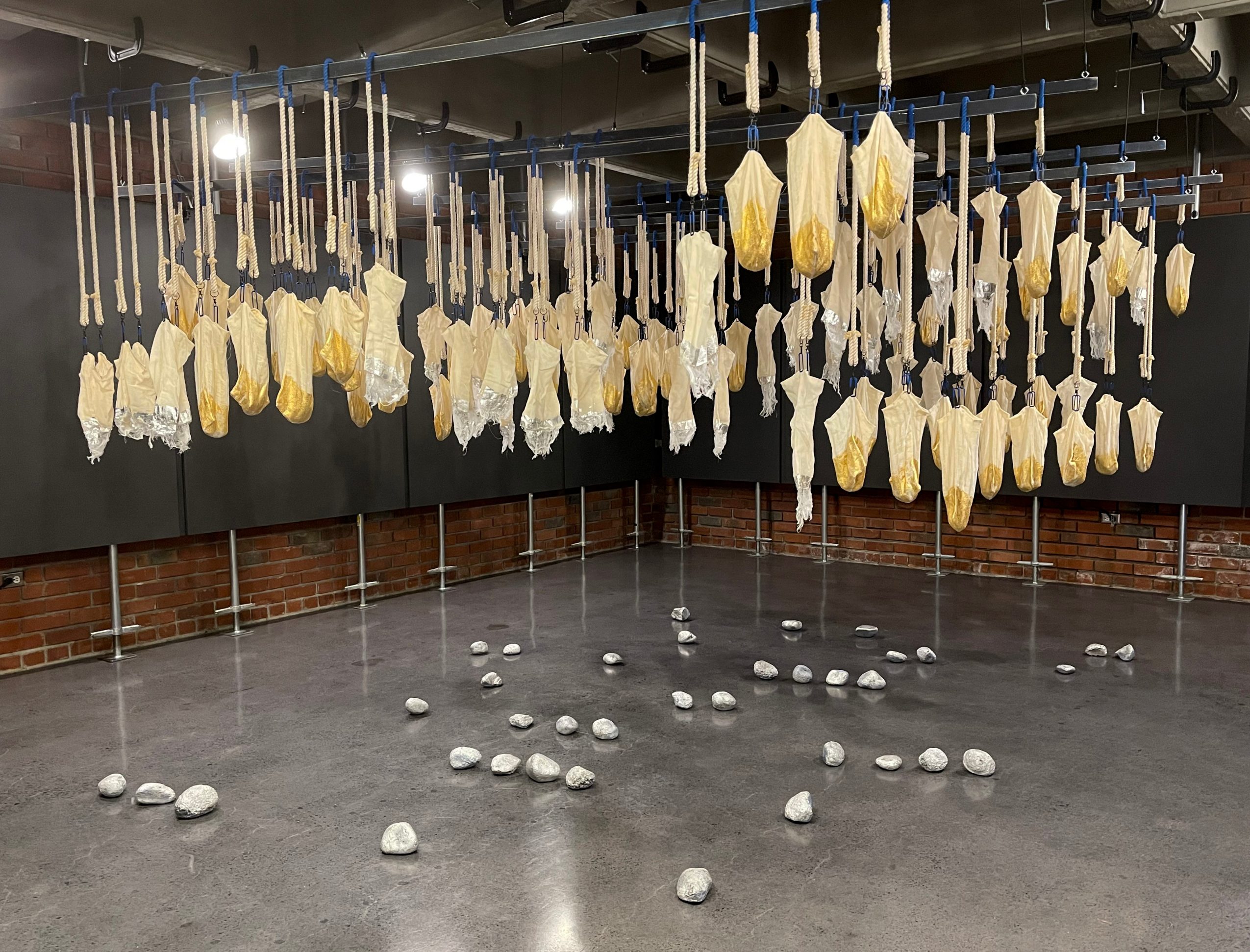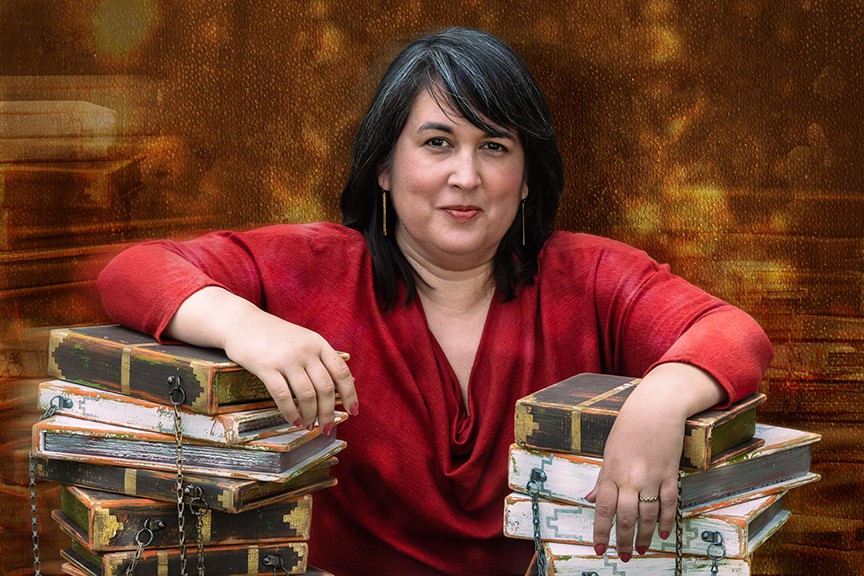

Today we’d like to introduce you to Sawyer Rose.
Hi Sawyer, so excited to have you with us today. What can you tell us about your story?
My work on The Carrying Stones Project celebrates the strength of working women while shining a light on the systemic inequities that women face in the workplace, at home, and in their communities.
I started this project at a time in my life when I had a toddler, an infant, a paid gig doing graphic design, my art practice, and an awful lot of unpaid domestic labor. I began to educate myself about all the different kinds of gender and work issues that women deal with and, looking at the data, I was struck by the scale of the problem — how stark the divides are between men and women in terms of unpaid labor, underpaid labor, career advancement, lack of representation in higher paying fields, lack of representation in male-dominated industries, and so on… Plus, women of color and low-wage workers are even further affected by all of these issues.
As an artist, I wanted to find a way to present all of this information in a fresh, creative way that I could get people to be excited about (or at least curious about) so I’d have an opportunity to create some real-world change. Because, you know, these days we’re all drowning in facts and news and social media — it’s hard to catch anyone’s attention about anything! And the way I decided to teach what I was learning was to look to the world of data visualization, also called “information design.” I take work data given to me by a diverse sample of working women and translate it into large-scale art that can then tell their stories. Hopefully, using this combination of art and data visualization, I can build bridges of understanding to folks who aren’t familiar with the hurtful effects of gendered labor inequity.
I’m sure you wouldn’t say it’s been obstacle free, but so far would you say the journey have been a fairly smooth road?
In my experience, working in the arts is rarely a smooth road. I began my career as a painter and sculptor making work to be sold in galleries. Sometimes people think that once you get gallery representation, it’s easy sailing from then on, but that’s not how it works. You still have to hustle for yourself – promote yourself, get clients to come out to the gallery, constantly produce fresh work. And now that I’ve switched to the issue-focused, activist work I’m doing with The Carrying Stones Project, I find I’m still doing all the same things! Now I’m promoting myself to get grants or fellowships, getting community leaders to come out to the museum or university to see a show, and of course, always making fresh work. But I love my job and I love that it has a purpose outside of myself and my career, so I feel lucky to do it.
Alright, so let’s switch gears a bit and talk business. What should we know about your work?
Here’s how The Carrying Stones Project works: First, project participants (women of different ages, races, sexual orientations, occupations, etc.) record their work hours, paid and unpaid, in a custom-built timekeeping app. Next, I translate each woman’s hours into a data visualization sculpture that lets viewers see the vast number of hours each woman logs at her paid work, her unpaid work, or volunteering. Once a woman’s data sculpture is complete, I take the storytelling a step further by taking a photographic portrait of each woman lifting and carrying her sculpture— bearing the burden of her hours in a real, physical way.
One of my favorite sculptures is about an LA-area local, America Young. America is a stuntwoman, director, stunt coordinator, voice-over actor, and a mom. In addition to the unpaid domestic labor in her home, America also spends unpaid hours working as Co-President & Founder of a nonprofit that advocates for women-identifying and non-binary filmmakers in an industry that notoriously under-represents women, especially Hispanic women like America. These are the inspiring stories I love to tell – ones that tell the personal story of an amazing women, but also spotlight larger labor issues.
The Carrying Stones Project also produces community participatory events that invite the public to co-create a data sculpture by adding their own labor hours to the piece. By examining their own workloads, and those of partners and friends, these interactive experiences give people new insights about how they fit into the larger labor landscape.
In the end, my hope is that The Carrying Stones Project can act as a conversation jump-starter and as a catalyst to help us bring labor justice to all women and in fact, all people. There are so many studies that show that a gender-balanced workforce is better for productivity, innovation, worker happiness, and the economy as a whole. Similarly, a gender-balanced workload in the home leads to healthier partner and parent-child relationships. We all benefit from leveling the labor playing field!
Are there any important lessons you’ve learned that you can share with us?
As an artist, the most important thing I’ve learned – and the advice I pass on to mentees and emerging artists – is to document everything you do as thoroughly and as professionally as possible. After your show is over, after your exhibition comes down, all you have left are the images to vouch for the amazing work you produced. When you go looking for your next opportunity, if you don’t have great documentation of what you’ve done before, you’re going to regret it!
Contact Info:
- Website: https://www.carrying-stones.com/
- Instagram: https://www.instagram.com/ksawyerrose/
- Facebook: https://www.facebook.com/sawyerroseart







 Image Credits
Image Credits
Artist portrait courtesy of New Museum Los Gatos All other images: Sawyer Rose














